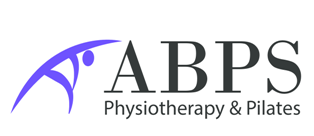Many of us have woken up with neck pain, usually with the inability to turn to one side. This is called wry neck – torticollis. This is a very common cause of neck pain and it is usually quite severe. When a patient walks in with the head tilted to one side and moving like a robot, this condition is commonly the cause. Obviously one cannot assume and a thorough examination is performed to consider differential diagnosis.
The clinician will ask about your habits, posture and work-station set up. Most frequently, sleeping habits contribute to acute and/or chronic neck conditions. So what is the ideal position to sleep in? Well, simply, it is the one which keeps the natural shape of your spine supported through the hours that you lie in bed.
What should I avoid?
– Sleeping on your front. Sleeping in this position, especially with a pillow under your head, places your neck in a fully rotated and extending position
– Reading or watching TV in bed with your head fully flexed
– Placing arm under the pillow

– Sleeping on the sofa

– Sleeping on plane journeys unsupported
– Sleeping on train during your commute
What is the best support for my neck?
Ideally you should sleep on your back or side, with the arm below shoulder level. When sleeping on your side the pillow should be tick enough to fill the space between your ear and mattress while keeping your cervical spine in line with the rest of your vertebral column. The support should extend to the very base of your neck.
When you’re lying on your back, the pillow should support the normal curvature of your spine. Having too many pillows or one very thin one can put excessive strains onto your neck joints and discs. Bearing this in mind, it is easy to see how many neck pain sufferers have a history of sleeping during a train journey or on a place. With the unsupported head tilted backwards, forward or to either sides, the neck is put through a lot of strain where muscles, ligaments and other soft tissue structures can become irritated.

Problems which may arise
– bulging discs & disc degeneration
– nerve root irritation, with symptoms such as pain, numbness and pins and needles down the arm
– headaches
– facet joint degeneration
– muscle spasm/imbalance
Should you need advice for your neck pain, please do not hesitate to contact us by email on [email protected] or call 020 8123 3232
Disclaimer The Author provides the Site and the services, information, content and/or data (collectively, “Information”) contained therein for informational purposes only. The Author does not provide any medical advice on the Site, and the Information should not be so construed or used. Using, accessing and/or browsing the Site and/or providing personal or medical information to the Author does not create a physician-patient relationship between you and the Author. Nothing contained in the Site is intended to create a physician-patient relationship, to replace the services of a licensed, trained physician or health professional or to be a substitute for medical advice of a physician or trained health professional licensed in your state. You should not rely on anything contained in the Site, and you should consult a physician licensed in your state in all matters relating to your health. You hereby agree that you shall not make any health or medical related decision based in whole or in part on anything contained in the Site.
physio London – physio liverpool street – physio bishopsgate – physio shoreditch – back pain ec2 – physio ec2 – back pain london – chiropractor liverpool street – gait analysis london





